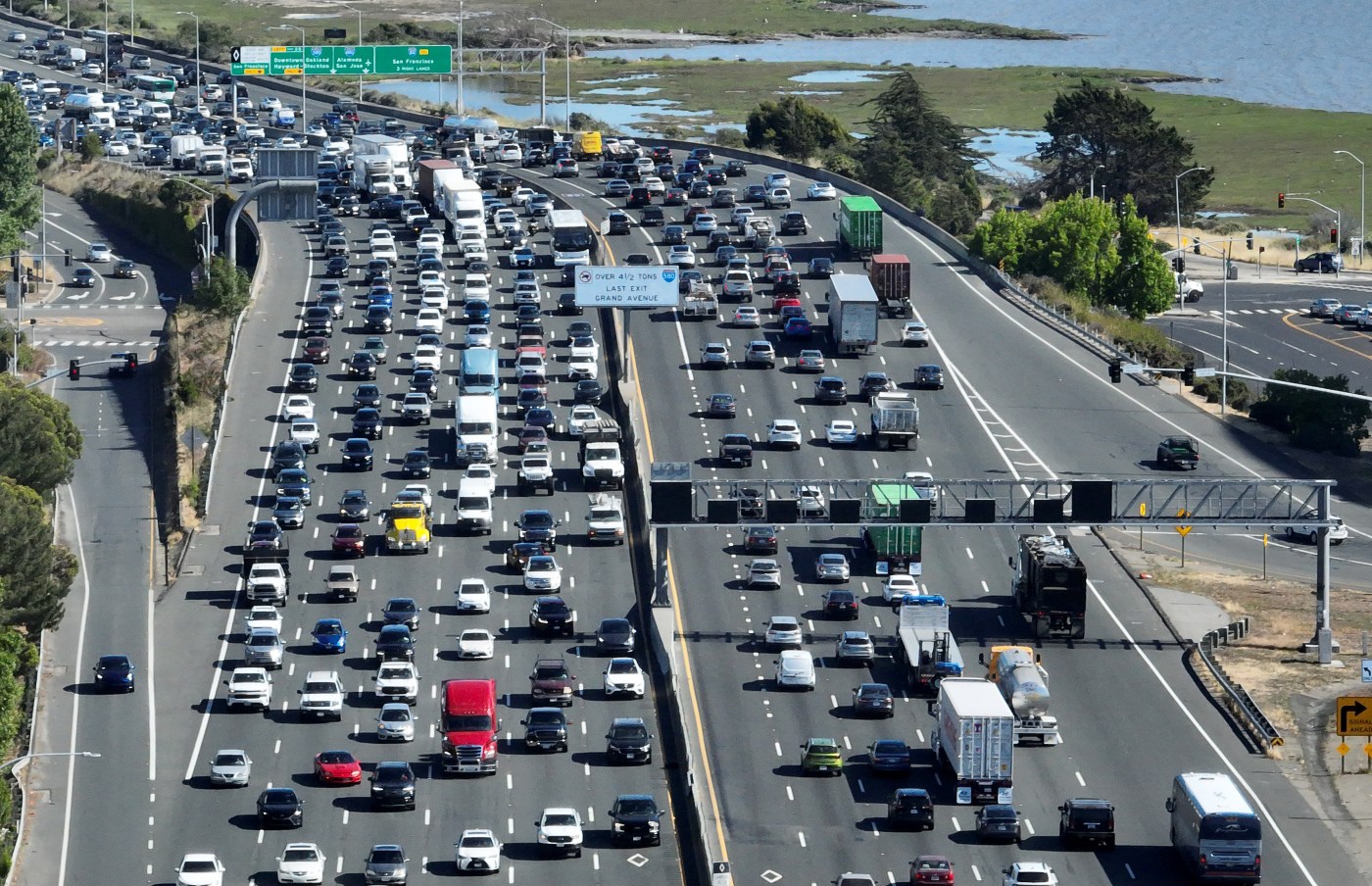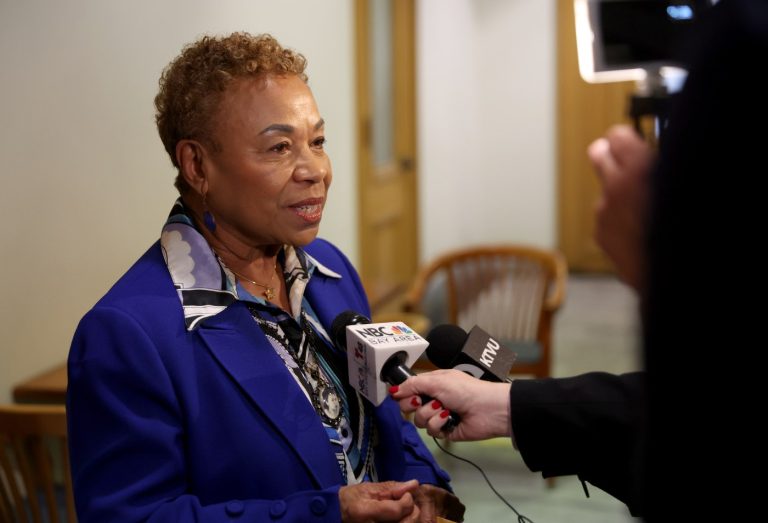California is growing again, news that comes as a relief, vindication or vexation, depending on where you stand in regard to the Golden State. Or, perhaps more aptly, where you reside.
The state, which had its modern birth in a fever of money-lust and speculation, gained population in every assay going back to those Gold Rush days. Growth — heady, unrelenting — was not only the natural order of things, but an affirmation. Of the California lifestyle, the state’s economy, its political leadership, the weather and, perhaps most of all, the beckoning of this most fertile landscape.
Then came pandemic, an immigration clampdown and the remote-work revolution. For the first time in its recorded history, California lost population. Not a ton, relatively speaking. But enough to prompt discussion of an “exodus,” to fuel the trash-talkers and give those ever-eager to write the state’s obituary an opportunity to sharpen their quills and their tongues.
More consequentially, for the first time in its history California lost a seat in the House of Representatives. Worse, its archrivals among states, Florida and Texas, grew their footprint on Capitol Hill.
It was an ego blow, a humiliation and a political setback.
Then came news last month that, lo, California was steadily growing again.
The increase of 232,570 residents from July 2023 to July 2024 amounted to a population gain of 0.6%. That’s scarcely a rounding error in a state with 39.43 million souls, give or take. And there were plenty of to-be-sures and caveats attached to that latest head count. California still lost more residents to other states than it gained and also experienced a slower rate of growth than the country as a whole — especially compared with the burgeoning Sun Belt states.
If projections bear out, California stands once more to lose House seats after the 2030 census, with its conservative-leaning nemeses, Florida and Texas, accruing even greater political clout.
End of exodus?
But at least the population tally was on the positive side of the ledger, which is gratifying and cause for good cheer, unless you considered the whole exodus thing to be overblown from the start — which it was.
“I don’t think one can gauge the health of a place” based on whether the population inches up or down slightly, said Jim Newton, a former Times editor who now pens history and biographies. Actually, he suggested, a little more elbow room might come as a relief to some Californians. Certainly any commuter clenching his or her teeth traveling on Highway 101 through Silicon Valley or agonizing along the 405 Freeway in Los Angeles won’t complain the state has too few occupants.
“A lot of people were projecting what they wanted into those numbers,” Newton said of the state’s brief population dip. “Particularly on the right.”
There is a long tradition — a meme before memes even existed — of trumpeting the decline and fall of California. Call it envy, call it sizeism. Say they hate us because they ain’t us.
“California is bigger,” said Jason Sexton, a cultural historian at UCLA, “so there’s more to hate.”
National publications, with the constancy of time and tides, have published recurring accounts of the state’s demise, their glee barely tucked below the surface. A classic of the genre came in the early 1990s, when Time magazine gave its cover over to a doleful headline, “California. The endangered dream” and the sun setting metaphorically into a blood-red sea.
The problem, it seemed, was too much population growth; wherever would the state put all those people?
It was hardly a new concern.
“The state is always off balance, stretching itself precariously, improvising, seeking to run the rapids of periodic tidal waves of migration,” wrote historian Carey McWilliams, arguably the greatest chronicler of California the state has ever seen. His observation was published in 1949. At the time, California had 10.3 million residents, just about a quarter of today’s population, making it the third-largest state, behind New York and Pennsylvania.
As California prepared to elbow past New York in 1962 to become the most populous state — a title it still holds, by a wide margin — Gov. Pat Brown declared four days of grand celebration.
So, yes, it was something out of the ordinary when California ceased its inexorable growth and, more, saw its population dwindle.
The shrinkage immediately became a proof point and cudgel taken up by the state’s chest-puffing detractors. Like so much else in this deeply riven country, the long-standing resentment toward California has assumed a highly partisan coloration. Hence, the population loss was bandied about Red America as irrefutable evidence of the blue state’s social collapse, its moral rot and the failings of its left-leaning political leadership.
The gray wave
Given that, will the latest population bump be taken as sudden validation of the California Way and a renewal of its glittering promise?
Nah.
Old animosities die hard; the more so when political agendas are in play. Besides, it’s not as though California’s problems — knee-buckling housing costs, gasket-blowing traffic jams, to name just two — have gone away overnight. Even a majority of those who live here hold a dim view of current circumstance. A poll by the Public Policy Institute of California, taken ahead of November’s election, found 60% of those surveyed believed the state was headed in the wrong direction.
And more steep challenges are on the way.
In 1980, the median California resident was just under 30 years old and senior citizens — those 65 and older — constituted barely 10% of the population. Forty years later, the median age was just over 38 and seniors made up 16% of the population. By 2040, the median age is projected to rise to more than 43 years old and seniors will constitute more than 22% of California residents.
Related Articles
Van moves to California drop to 2nd-lowest share on record
5 stories from 2024 on what it’s like to live in the Bay Area
Is California living worth the costs and taxes?
California nets large population increase in 2024 — nearly returning to pre-pandemic level
Want to leave the country? Consider a few things first
Greg Lucas, the state librarian, suggested time would be better spent focusing on the composition of California’s population than obsessing over raw numbers. “Are we ready,” he asked, for the monumental changes and the stressors, among them higher health care costs and a less-mobile population, that gray wave will bring? “Are we” — heaven forbid — “ going to become Florida?”
For now, one can hope the end of the supposed California exodus — quote-unquote — will bring at least a brief halt to all the hyperbolic takeaways and tiresome death notices.
The state always seems to be teetering on a precipice, or grappling with one crisis or another, either natural or man-made. But through a mix of bullheadedness, resilience, love and pride, California and its enticements endure. Sexton, the UCLA historian, summed up the native spirit, ticking off several of the state’s myriad troubles, then concluding, “I’m not going anywhere.”
“Why,” he asked, “would I?”
Mark Z. Barabak is a columnist for the Los Angeles Times. ©2025 Los Angeles Times. Distributed by Tribune Content Agency.












